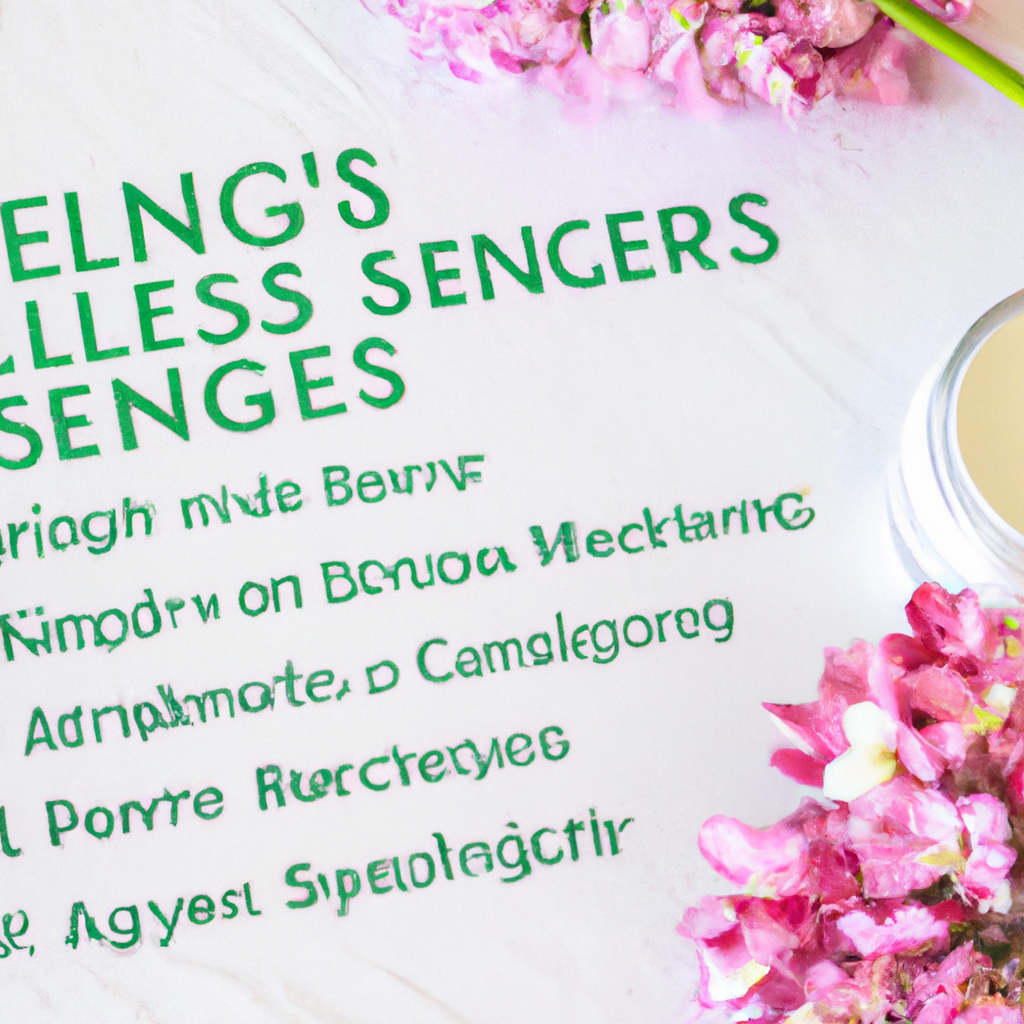Do you ever find that your skin becomes irritated and inflamed in response to some products? Do you feel like a game of skincare roulette? If you suffer from allergies or sensitive skin, congratulations: you’ve won the trifecta! Managing skincare sensitivities requires finesse and diligence more than anything else. Discover how to make your skincare routine work best for your skin with these essential tips and tricks.
1. Crafting a Sensitive Skin Care Routine
Having sensitive skin can be tough. You want to take the best care of your skin while avoiding any potential triggers. Crafting a customized skin care routine takes some time, but it is worth the effort. Here are five tips to help you create a well-balanced sensitive skin care routine:
- 1. Hydration Is Key: Your skin needs to stay hydrated if it is to remain healthy. Get into the habit of using a gentle cleanser and moisturizer every day, and use a serum or mask that contains hydrating ingredients at least once a week.
- 2. Know Your Triggers: It’s important to know what ingredients can cause flare-ups for your skin and avoid them. It might take a bit of trial and error, but once you know how to spot potential irritants in skin care products, make sure to keep them out of your routine.
- 3. Do Your Research: Don’t be afraid to read all the information on the label of a product before you purchase it. Customers reviews can also be helpful in determining which products will suit your sensitivity best.
- 4. Be Patient: It takes time for skin care products to get to work. Be patient – once you’ve found the right products, stick with them long enough to get the best results.
- 5. Don’t Overdo It: Treat your sensitive skin kindly – it can’t take too many harsh products and processes. If something is causing irritation, take a break from it. Your skin will thank you in the long run.
Having a comprehensive skin care routine that caters to your sensitive skin type can provide you with the support you need, while also helping keep flare-ups at bay. Keeping your skin clean and hydrated is much easier than you think, and if done correctly, can help you care for your sensitive skin for years to come.
2. Reconsidering Common Allergen Ingredients
When it comes to minimizing allergies in cooking, there are many tried-and-true ingredients that seem like an obvious choice to avoid. From peanuts to wheat, people often assume that certain foods should be completely avoided to prevent an unwanted allergic reaction. However, some of these so-called common allergens may not be as bad as they seem. Here are a few to reconsider:
- Sesame Seeds: Despite its common presence in ethnic dishes, sesame is actually one of the least allergenic food items. In actuality, sesame allergies are relatively rare and those who have a sesame allergy might only be mildly allergic to it.
- Gluten: While those with celiac disease must always be sure to avoid gluten containing food, gluten is not as dangerous as people think. A study of multiple countries concluded that only 1 percent of the population had celiac disease, showing that gluten allergies may be much more minor for those who do show signs of being allergic.
- Tree Nuts: Often grouped together with peanuts, tree nuts, including walnuts, pecans, and almonds, are actually rarely allergenic. Studies show the chances of being allergic to tree nuts are actually very low.
It is important to note, however, that one should never take allergy risks. If someone shows signs of being allergic to these items, it is always best to avoid them completely. Still, it is worth taking a second look at potential allergens, as some allergies may be more mild than expected.
Furthermore, for those without severe allergies, experimenting with these ingredients can help open up a new range of flavors and culinary possibilities. Paying attention to signs of an allergic reaction is key.
3. Hunting Down the Hidden Triggers
As you get deeper into your budgeting journey, it’s essential to identify the underlying triggers that impact your spending. Hidden triggers are the sneaky, almost invisible factors that drive your impulse buying – and ultimately your wallet – into an unknown abyss.
To thoroughly investigate and seek out these triggers, dig into your personal spending behaviour. Ask yourself questions such as:
- What may have influenced your purchases?
- What type of activities make you spend more money?
- How does it feel to shop?
- What feelings provide motivation to buy?
Be honest and thorough in your self-analysis; only then can you dig out and diagnose any hidden triggers.
Social media is a powerful force. It can act as a trigger, subtly nudging you to spend! Take stock of how much social media ‘advertising’ you are exposed to daily. When faced with buying decisions, pay attention to your feelings before and after the purchase. This can alert you to hidden psychological connections between your impulse buying and social media.
Knowing your hidden triggers is a key step to understanding your spending habits. Create an open dialogue with yourself and keep track of how your environment and emotions influence your decisions. Use this as your starting point for !
4. Taking Precautions: Prevention is Key
The most important step in fighting any virus is prevention. With COVID-19, the best way to protect yourself and others is to take the necessary precautions:
- Wear a face covering when in public or in any indoor space with people you don’t live with.
- Practice social distancing from those that don’t live with you.
- Wash your hands often with soap and warm water for at least 20 seconds. This is particularly important when you arrive home from a public place.
These activities prevent the spread of the virus by reducing the chances of germs being transferred from one person to another. It’s also a good idea to use hand sanitizer if you can’t get to a sink. And if you follow these practices every time you go out, you’ll be further safeguarding yourself and your surroundings.
You should avoid all large gatherings, especially if social distancing is not maintained. If you are going out, try to make as few trips as possible. When you arrive at a store or restaurant, maintain a distance of 6 feet from other people and consider reducing any unnecessary contact.
5. Finding Balance: Allergy-Friendly Tips for Every Occasion
Allergies can cause a world of woes, but life doesn’t stop just because of food sensitivities. Here are five tips to help you manage your allergies and maintain a sense of balance in your daily routine:
- Eat your favorite foods: If you’re allergic to a certain food, you don’t have to miss out on its deliciousness. Consider substituting the ingredient with something hypoallergenic, like a gluten-free version. If you’re feeling adventurous why not make a dish from scratch and show off your culinary creativity?
- Socialize with care: When inviting friends over, check with them in advance to see if anyone has dietary restrictions. You can easily accommodate any allergies in your menu by selecting recipes that are free from common allergens.
- Follow the rules: Whether it’s a restaurant, a friend’s home, or a new locale, be sure to remind yourself to adhere to your own food allergy rules. If you’re not sure what’s in a dish, always err on the side of caution and pass on that tasty morsel.
- Stay perspicacious: Have you ever taken a bite only to realize you’re having an allergic reaction? Pay attention to your surroundings for any potential allergen triggers, such as smells or décor. Don’t be afraid to leave if need be.
- Look for resources: From stores that specialize in food allergies, to digital databases that list ingredients, to allergy-specific cookbooks, there are many resources available to help you find balance. Connect with like-minded people who have similar dietary needs.
By following these five tips, you can enjoy every occasion to the fullest and maintain your allergy-friendly lifestyle. Don’t let allergies keep you from partaking in the simple pleasures life has to offer.
With the right knowledge and the proper treatments, managing skin allergies and sensitivities can be relatively easy. With a few simple steps and tips that you can implement, you can care for your skin and feel confident in the knowledge that you’re making the right choices for your skin.




